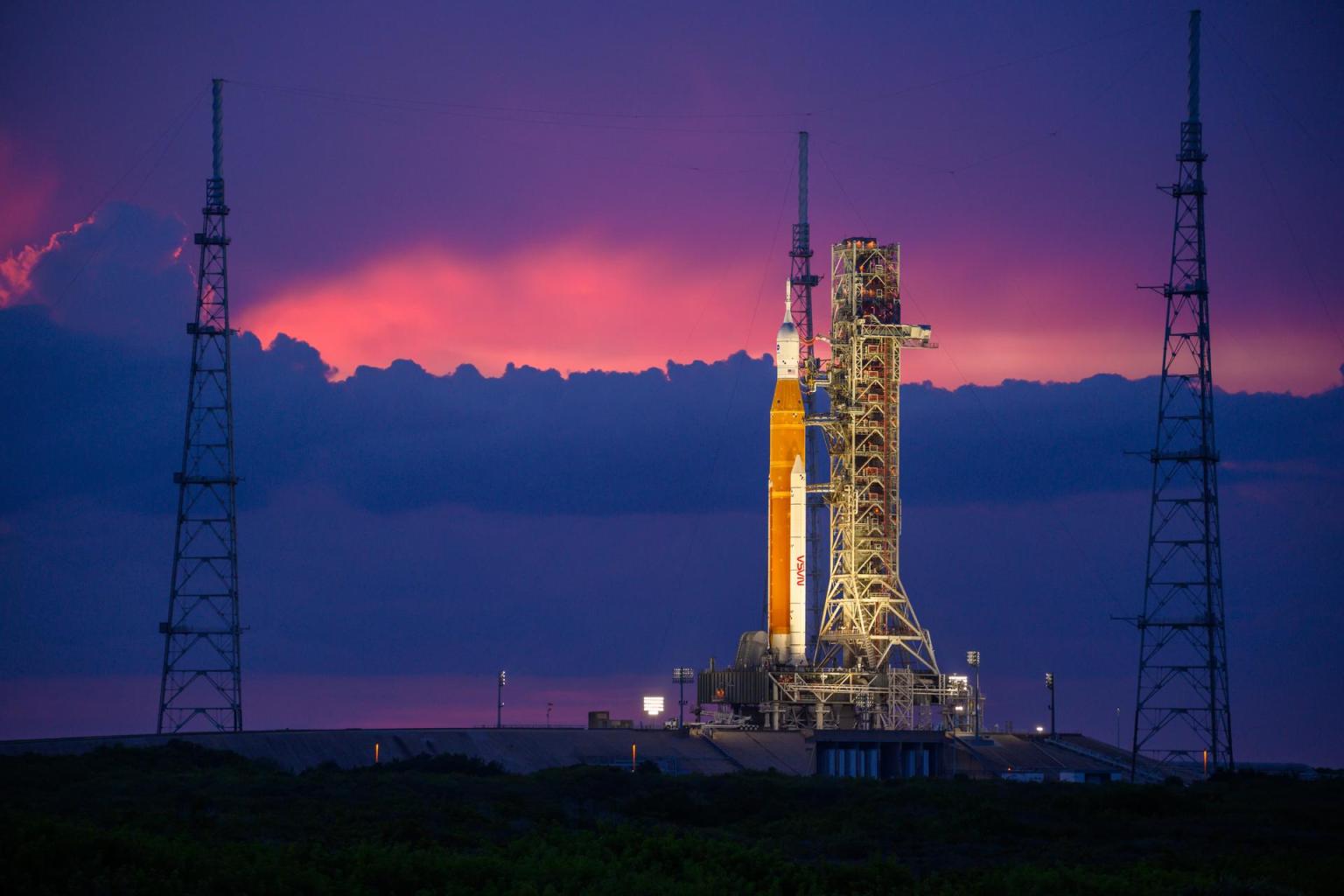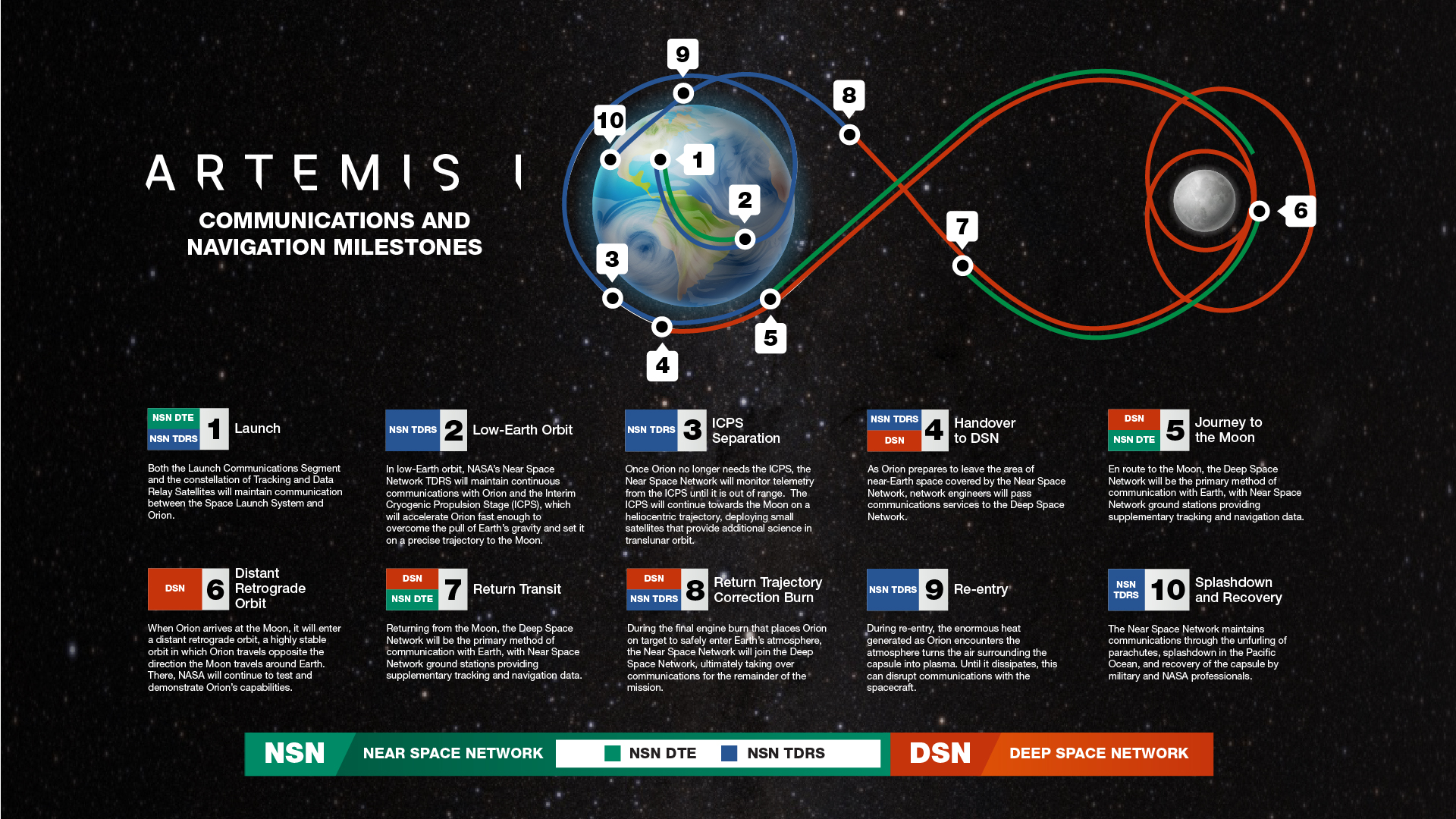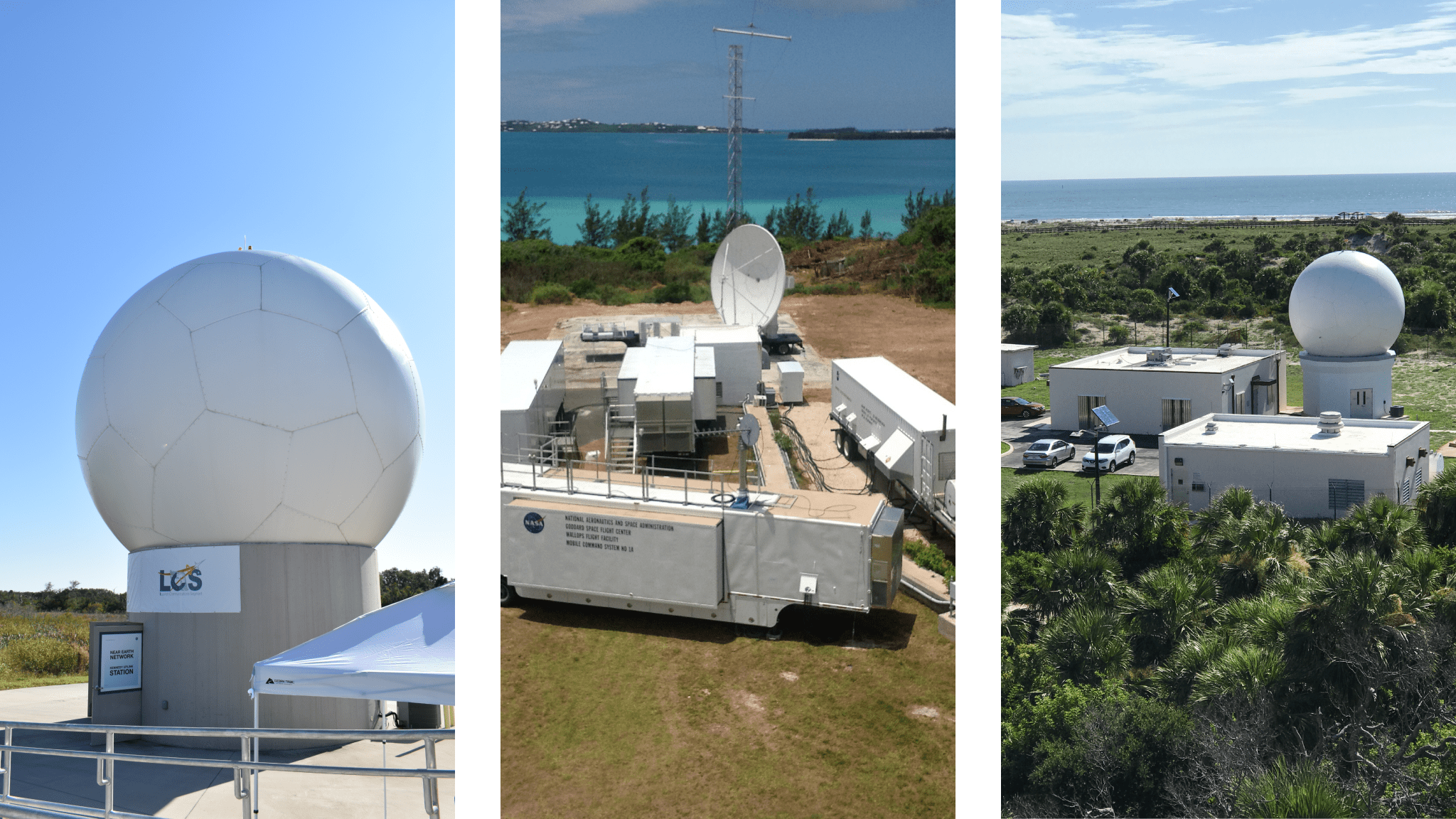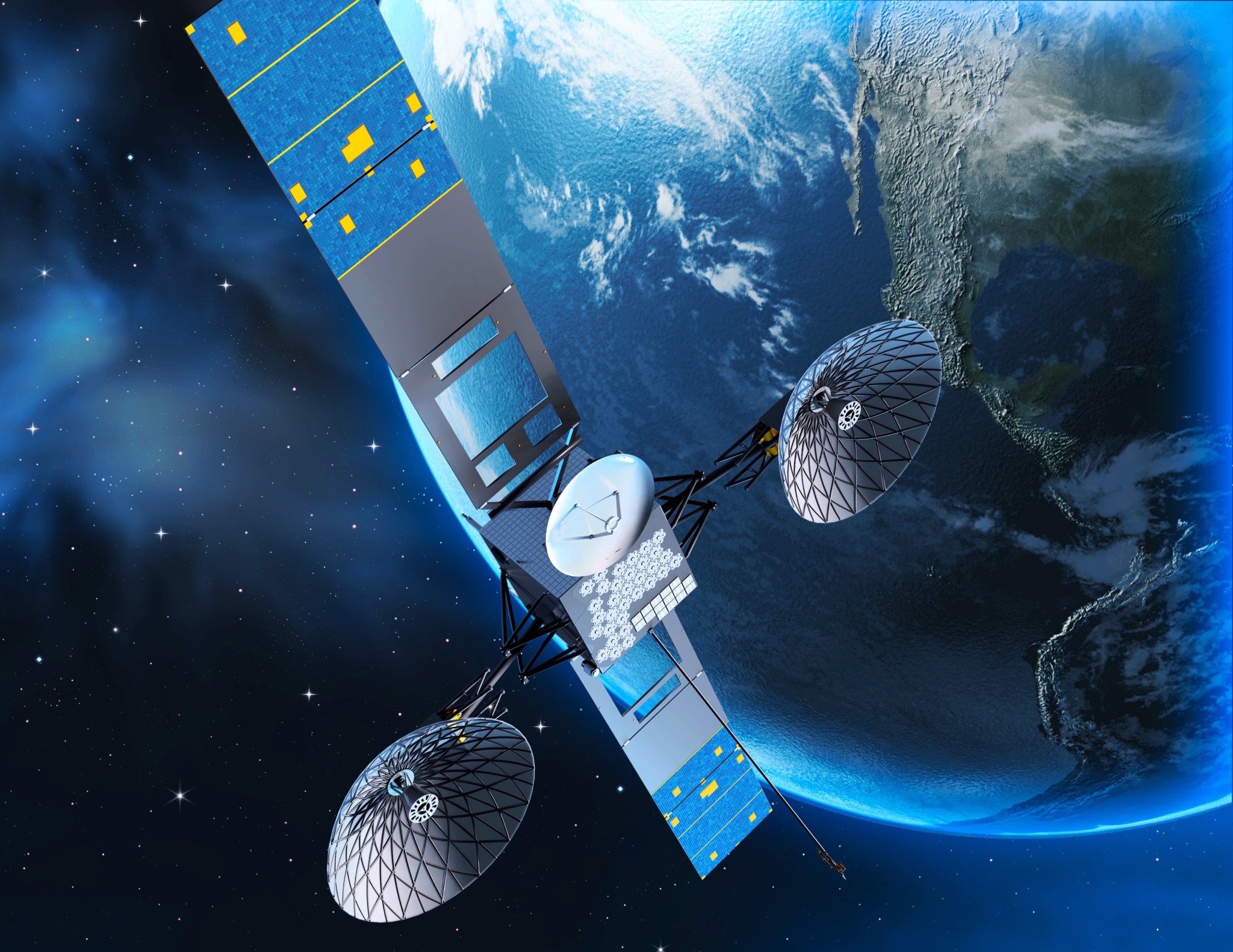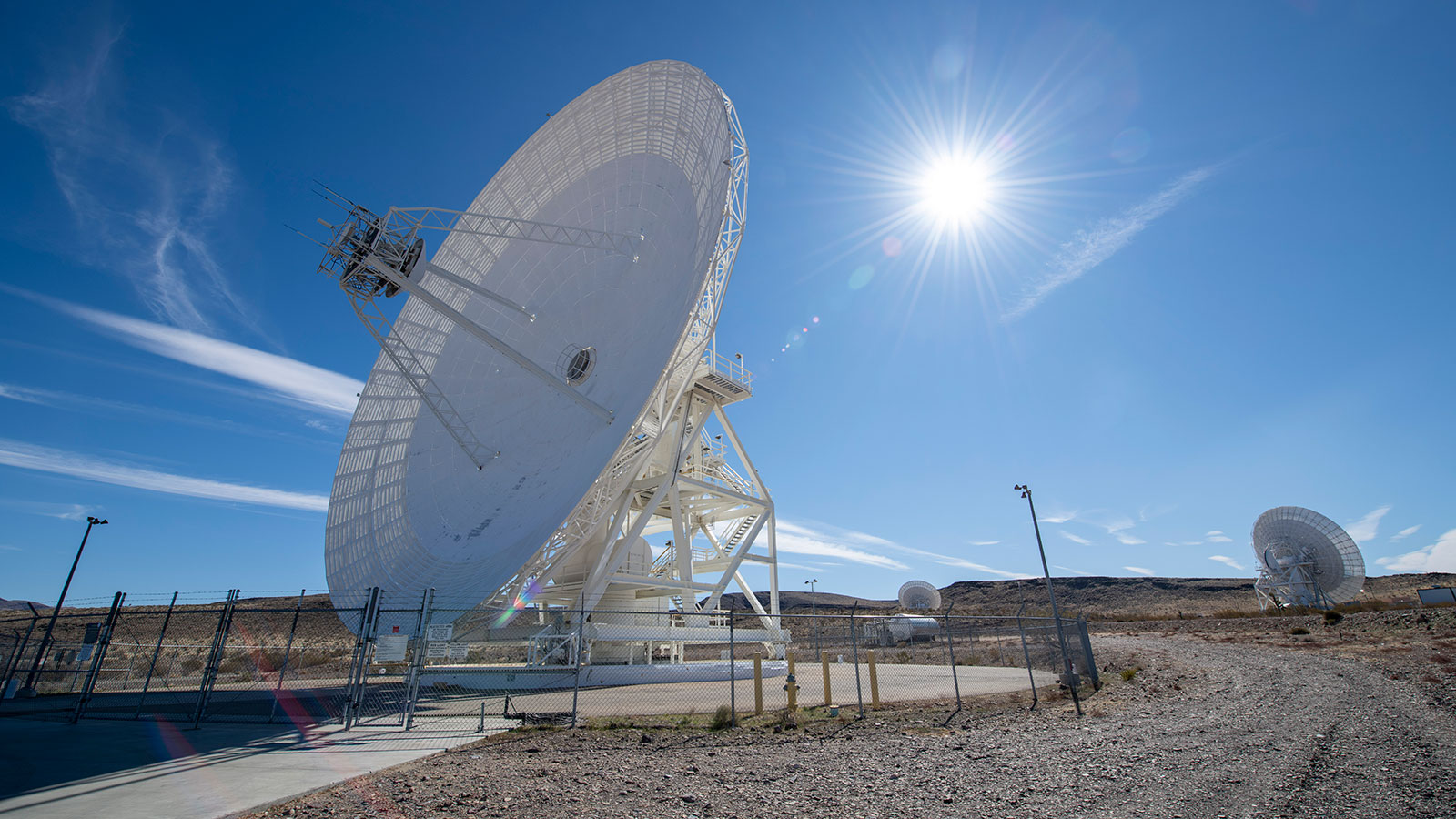Editor’s note: This feature was updated on June 23, 2021 to reflect a reorganization of NASA network assets.
On our journey forward to the Moon and on to Mars, NASA must test our technologies and capabilities to ensure astronaut safety. The Artemis I mission will be an uncrewed flight test of the Orion spacecraft that places a human-rated crew vehicle in lunar orbit for the first time since the Apollo missions of the 1960s and 70s. The mission will showcase the capabilities of both Orion and the Space Launch System (SLS), NASA’s powerful new rocket, which will launch Artemis missions from Kennedy Space Center in Florida.
Artemis I will demonstrate NASA’s networks’ comprehensive services for journeys to lunar orbit. The mission requires all of NASA’s space communications and navigation networks to work in tandem, providing different communications and tracking service levels as Orion leaves Earth, orbits the Moon, and returns safely home.
Communications services allow flight controllers in mission control centers to send commands to the spacecraft and receive data from Orion and SLS systems. Tracking, or navigation, services enable the flight controllers to see where the spacecraft are along their trajectory through space.
NASA’s Near Space Network
Based out of NASA’s Goddard Space Flight Center in Greenbelt, Maryland, NASA’s Near Space Network provides users with communications and navigation services through a blend of commercial and government-owned, contractor-operated infrastructure. The network will provide communications and navigation services during launch and navigation services at various points on Artemis I’s journey to the Moon.
Near Space Network Direct-To-Earth Services
The Near Space Network’s Launch Communications Segment (LCS) will provide critical links to both Orion and SLS during prelaunch and launch of Artemis I. Three ground stations along Florida’s space coast comprise LCS, which was designed to meet the specific needs of the SLS launch vehicle and will grow to support other missions after Artemis I.
Specifically, the first two stations along the rocket’s flight path will provide uplink and downlink communications between the rocket and mission controllers. In the final phases of ascent, the third station will downlink high rate telemetry and video from SLS while Orion connects to communications relay satellites. The Near Space Network’s navigation services extend to Orion’s journey from low-Earth orbit to the Moon and back through ground stations in Santiago, Chile, and Hartebeesthoek, South Africa.
These Near Space Network stations will support navigation data before and after the outbound trajectory correction burns that ensure the spacecraft stays on a path towards the Moon. The Near Space Network will also provide navigation services during Orion’s outbound powered flyby burn that occurs at the mission’s closest approach to the Moon, setting the stage for final insertion into lunar orbit.
For Orion’s return from the Moon, the Near Space Network will provide navigation data for departure from lunar orbit and the return power fly-by burn that will place Orion on a course back for Earth, during which the network will also provide navigation services.
Near Space Network Relay Services
The Near Space Network also provides services to Artemis I through NASA’s constellation of Tracking and Data Relay Satellites (TDRS), which can provide near-continuous communications services. Located about 22,000 miles above Earth, TDRS relay data from spacecraft at lower altitudes to ground antennas. TDRS will play a critical role during launch and low-Earth orbit phases of the Artemis I mission.
Beginning at the launchpad, the TDRS will maintain a connection with Orion and the Interim Cryogenic Propulsion Stage (ICPS). ICPS provides the power to accelerate the spacecraft fast enough to overcome the pull of Earth’s gravity and set in on a precise trajectory to the Moon. TDRS will continue service until Orion and ICPS leave its coverage volume, when NASA’s Deep Space Network takes over.
On Orion’s return to Earth, TDRS will facilitate communications from the final return trajectory correction burn through splashdown in the Pacific Ocean and recovery of the capsule. The return trajectory correction burn ensures Orion enters the atmosphere at just the right moment, allowing NASA to land the craft safely.
NASA’s Deep Space Network
The Deep Space Network, managed by NASA’s Jet Propulsion Laboratory in Southern California, will handle communications for Artemis I beyond low-Earth orbit. This includes the mission’s outbound trajectory corrections, outbound powered flyby, return powered flyby burns, and return trajectory corrections while the Near Space Network provides supplemental navigation data.
The Near Space Network and Deep Space Network tag team navigation for Orion so that engineers can employ a technique called three-way Doppler tracking. Using this method — with two ground stations on Earth in contact with Orion simultaneously, one from each network — NASA can triangulate Orion’s location relative to the ground stations.
At the Moon, the Deep Space Network will enable insertion into distant retrograde orbit. Distant retrograde orbit is a highly stable orbit in which Orion travels retrograde, or opposite, from the direction the Moon travels around Earth. The Deep Space Network will maintain communications with Orion while in distant retrograde orbit and during the burns for departure, return power fly-by, return transit and the final return trajectory correction burn, with assistance from the Near Space Network’s TDRS constellation.
The Deep Space Network will also help facilitate communications for all three of the mission’s CubeSat deployment stops. The CubeSats are small satellites that will be deployed along Orion’s trajectory to provide additional research opportunities for scientists and engineers. After deployment, many of the CubeSats will also communicate through the Deep Space Network.
The networks supporting Artemis receive programmatic oversight from NASA’s Space Communications and Navigation (SCaN) program office. In addition to providing communications services to missions, SCaN develops the technologies and capabilities that will help propel NASA to the Moon, Mars and beyond.
























